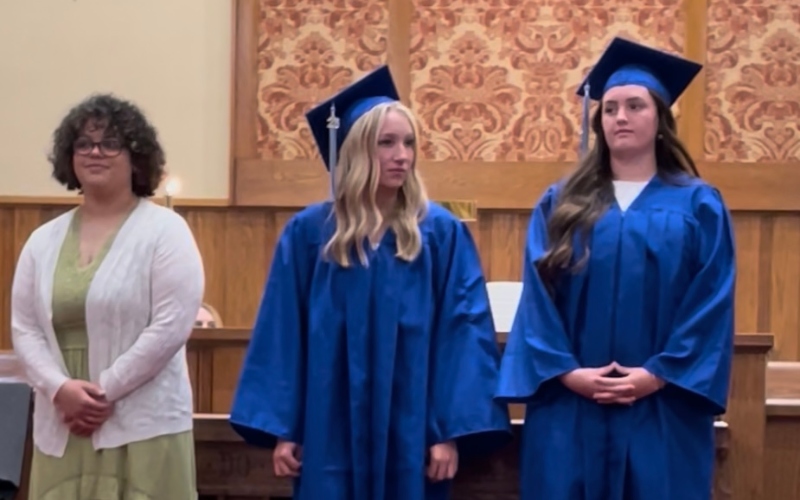Let’s put on our rabbit eyes
Published 10:04 am Monday, June 27, 2022
|
Getting your Trinity Audio player ready...
|
I’ll begin this column by telling you about one of the lessons I learned from the 22 summers spent at Camp Glen Arden. When our granddaughter Emma was too young to be a camper, she spent the summer days in the weaving hut or in the kitchen with me. At night we often had to walk from the kitchen to our cabin, and there was a section of the road where it was always very dark, too dark to see unless we waited a minute for our eyes to adjust to the darkness. After a minute or so our “night eyes” woke up and we were able to continue on to our cabin. One night years later when we were walking from our house to the barn and I complained about it being too dark to see, Emma looked at me and said “Grandmaaaaa, put on your night eyes!” I’ll always remember that simple, elongated “Grandmaaaaa”, and I’ll always have my night eyes ready when I need them.
Fast forward to last week, when Don Mason and I were trying to cut through briars and new growth in a newly timbered forest to locate a new section of trail. It was awful! Don was using his machete and I was behind him with my little clippers; the new growth was so high and thick that we could not even see where we were going – not a good thing when trying to site a new trail! As soon as we got to an open space on an existing trail, we decided to postpone our new trail endeavor until wintertime when we might actually be able to see where we were going.
Once we got out of the briars and on to the existing trail, it all got better. The trail was partially covered by briars, but it was walkable and my clippers came in very handy. We were able to actually look at what is now growing in that ‘thicket’ left by the loggers. We began to see plants that we had never seen before the logging, plants that had obviously been shaded out by the crowded tree cover. Don made a list of the new growth that we saw. Here are a few of them: Tulip poplars, blackberries, several types of maples, holly, white pines, black locust, red and white oaks, blueberries, wild cherry, black gum, sassafras, elderberry, dogwood, cucumber magnolia, sourwood, beech and birch. That doesn’t even count the little plants along the ground, most of which we could not identify, nor does it even consider all the little creatures crawling beneath that dense new growth.
As soon as we gave up our purpose for being there – clearing a new trail – our walk became quite pleasant and we started observing the vegetation around us. For the first time in many years, sunlight was available to that vegetation. The new growth was all new and healthy, basking in that sunlight yet protected from winds by the remaining, uncut trees around them. Picture the playground on the first day of kindergarten – children playing willy-nilly, pushing each other to get to the sliding board first, laughing and running. That’s what these young plants are doing now – pushing and shoving for air and that precious sunlight, growing as fast as they can towards that fresh air and light.
On the way home I was thinking about how different our experience was after we stopped to accomplish our goal of clearing a new trail. We were looking around with open eyes, without judgment. We were simply ‘looking’. I remembered Emma’s command: “Grandma, put on your night eyes” and I spent a couple of days trying to think of what eyes I should put on.
Then I remembered Brer Rabbit’s plea: “Skin me, Brer Fox, snatch out my eye-balls, t’ar off my years by de roots, en cut off my legs, but please, Brer Fox, don’t fling me in dat briar-patch.”
And we all know the end of that story. The briar patch may not be heaven for us, but it is a beautiful home for Brer Rabbit.
The next time you are in a messy, overgrown briar patch, just open your rabbit eyes and you’ll see a whole world that you had never noticed before, and it is full of life!





